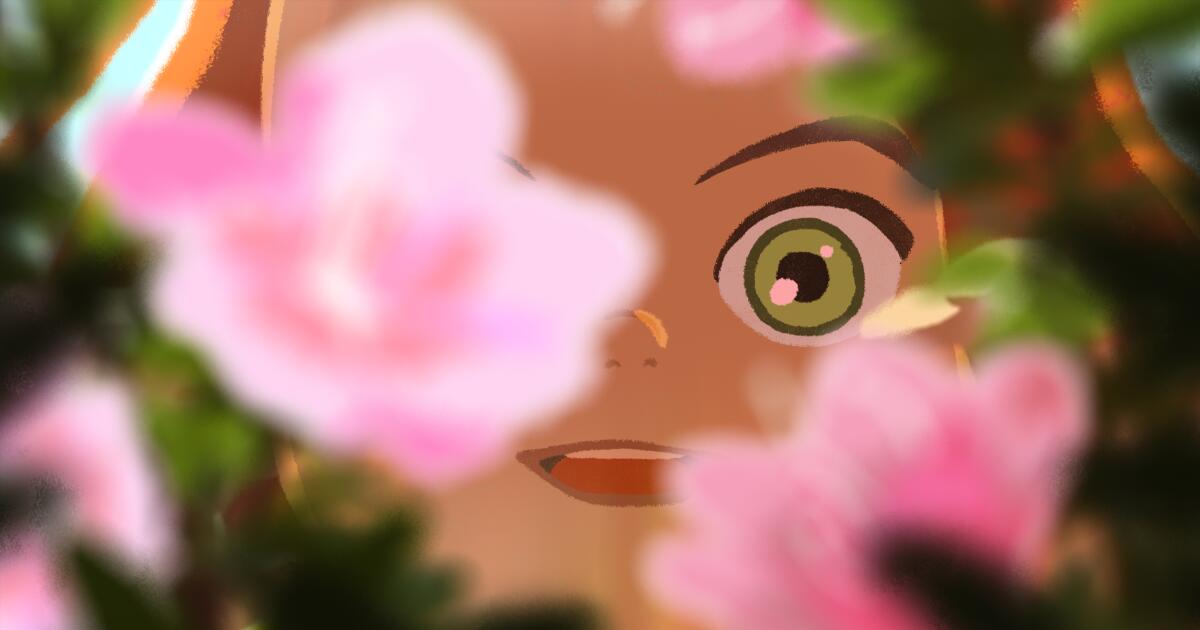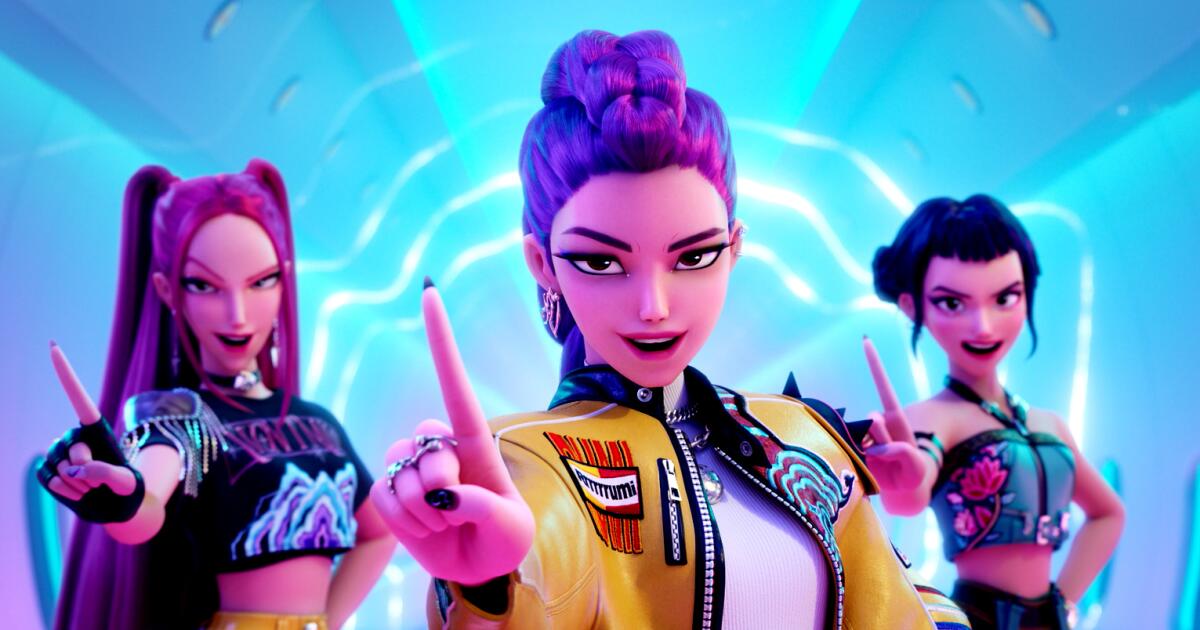‘Little Amélie or the Character of Rain’ review: Stunning, mature animation
It’s the one-two punch of an earthquake and a piece of scrumptious white chocolate from Belgium, a country famous for its sweet confections, that awakens 2½-year-old Amélie (voiced by Loïse Charpentier) to the wondrous and perilous world around her.
Rambunctious and astute, the toddler heroine of the sublimely beautiful animated film “Little Amélie or the Character of Rain” first communicates in voiceover from the void of nothingness before birth. She declares herself a powerful deity and explains that God is essentially a “tube” that constantly ingests and secretes experiences and things. That description could also apply to human existence in a general sense if you take away the philosophical complications that give us meaning. (We are, thankfully, more than all-consuming vessels.)
But until she’s stirred by the earthquake and chocolate, Amélie refuses to engage with reality, observing without making any effort to move or talk, as if displeased with having been born. Her absolutist views of what it means to be alive slowly peel away in the life-affirming first feature from co-directors Liane-Cho Han and Maïlys Vallade, a screen adaptation of Amélie Nothomb’s autobiographical 2000 novel “The Character of Rain,” popular in French-speaking countries.
Akin to impressionistic paintings, the animation here decidedly lacks intricate designs and opts for flat hues coloring figures without visible outlines. The stylistic choices result in a striking, distinctly pictorial aesthetic in line with earlier projects that Han and Vallade worked on, such as “Long Way North” and “Calamity,” both directed by Rémi Chayé.
The third child of a Belgian family living in 1960s Japan, young Amélie develops an endearing relationship with housekeeper Nishio-san (Victoria Grobois). While her parents have their hands full with her older siblings, Amélie explores nature and becomes enamored with Japanese culture. That the affectionate Nishio-san doesn’t impose her perspective on the girl, but quite literally tries to perceive each moment from her height, signals a bond that’s closer to one between mutuals.
It’s through Amélie’s gaze — or, more precisely, how these filmmakers interpret it visually — that we begin to understand her invigorating whimsy. Early on, it seems like her rapidly changing moods affect the weather; later, Amélie steps into the ocean and it parts as it did for Moses (if only in her restless imagination). A person her age is inherently self-centered, unaware that she is part of a bigger whole.
To illustrate Nishio-san’s account of how she lost her family during World War II, animators Han and Vallade zero in on the dish she is cooking: Chopped vegetables fall into a pot like missiles, a gust of pot steam represents a fiery aftermath, rice under water shows how Nishio-san had to dig her way out of being buried alive. The gruesome subject matter is translated into immediate household imagery that someone Amélie’s age could grasp.
When Nishio-san shares with Amélie that the Japanese word “ame” means rain (so close to her own name), the girl takes this as confirmation that her kinetic, unbridled and visceral impulses are natural. Her feelings of kinship with precipitation are transmuted into a delightfully conceived scene in which little versions of Amélie appear inside every falling raindrop. These fanciful instances benefit from Mari Fukuhara’s score, a drizzle of aural luminosity.
Amélie’s rowdy approach becomes more nuanced when she is confronted with a loved one’s death, as well as her own mortality in the aftermath of two accidents. Han and Vallade also make room for her realizations about life’s unfairness and the inevitability of sorrow — all communicated via flights of fancy that only animation can materialize.
In turn, it comes as a shock for Amélie to learn that she is not Japanese, even if that’s the country she considers home. Her future may be determined by Kashima-san (Yumi Fujimori), the landlady who owns the house Amélie’s family is renting and who brought Nishio-san on to help them. Kashima-san distrusts westerners — her wounds of wartime haven’t healed — and to see Nishio-san smitten with Amélie feels like a betrayal.
The larger implications of her presence escape the little one, but the fact that Amélie, even at her age, is able to empathize with Kashima-san’s despair speaks to the thematic richness and emotional maturity that Han and Vallade channel in their brisk, arresting feature. The gently transcendent, tear-inducing conclusion that “Little Amélie” reaches suggests that memory serves as our only remedy for loss. As long as we don’t forget, what we cherish won’t become ephemeral.
‘Little Amélie or the Character of Rain’
In French, with subtitles.
Rated: PG, for thematic content, peril and brief scary images
Running time: 1 hour, 17 minutes
Playing: In limited release Friday, Nov. 7

